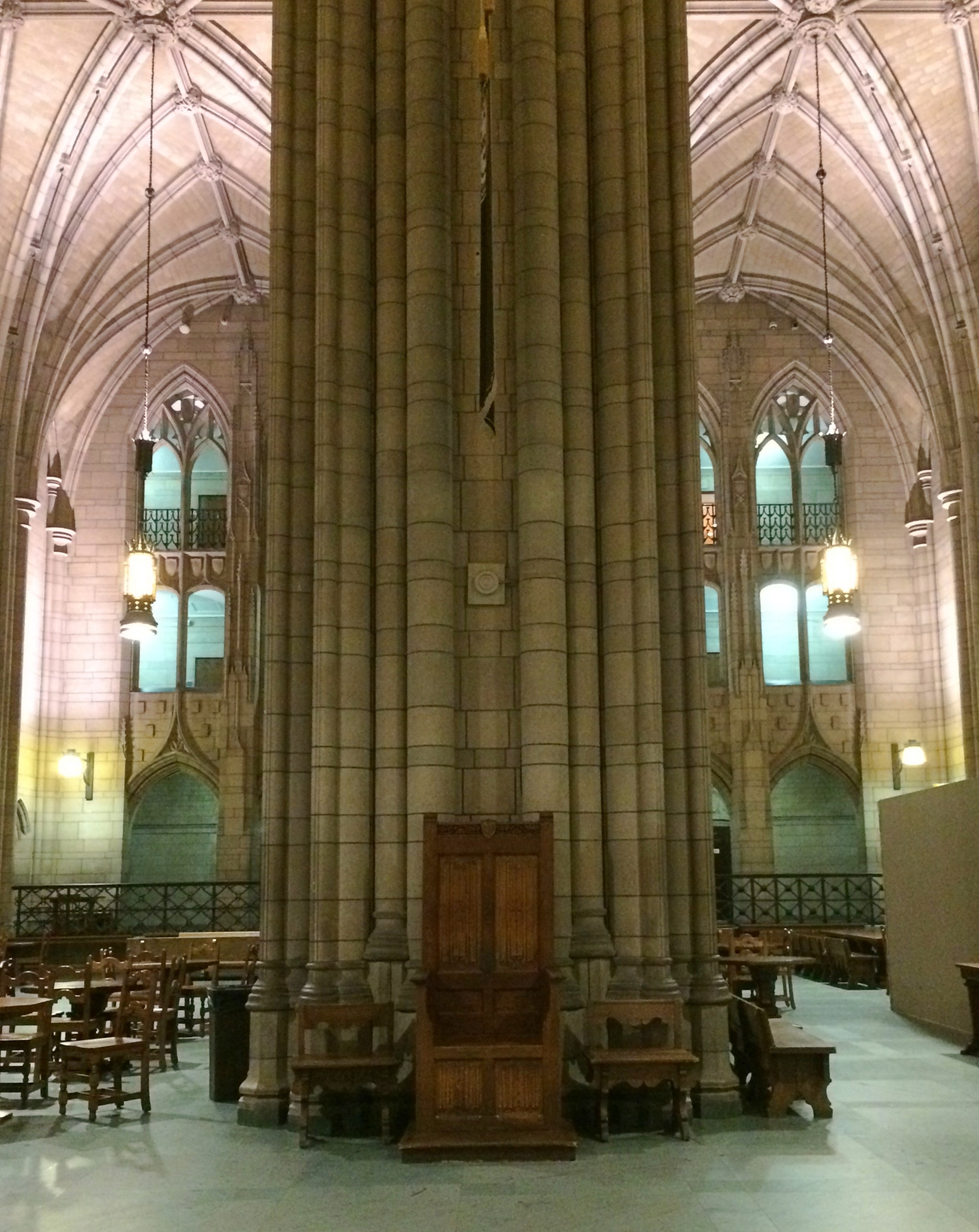Pittsburgh has some of the most convoluted street patterns I’ve ever driven through. It’s as if a few grids were thrown at random among the hilly terrain, sort of meeting each other in places, with additional streets — some large, some alley-like — crossing the grids at all angles, plus oddball five- and six-way intersections punctuating things. You know, like Boston, only with more hills.
But also more street signs. And fewer lunatics behind the wheel. At least that was my impression, admittedly based on a small sample, as I figured out how to get from place to place. So driving in Pittsburgh wasn’t actually that bad, certainly better than Boston, despite its initial challenges.
Our car has GPS with spoken instructions. I decided to try it on the first morning in town. Pittsburgh managed to flummox the system early in the game. That is, it was unable to give me directions that I could use in a timely manner. Maybe I misunderstood. Doesn’t matter — I found the system annoying, so I quit using it. I went back to consulting maps.
Still, the system’s misdirection, or my misunderstanding, at one point led us through the Liberty Tunnel. Earlier we’d gone through the Fort Pitt Tunnel. Pittsburgh might have some great bridges — more about which later — but it also has some really cool tunnels to drive through.
Our second major destination on the first day was the University of Pittsburgh, which is in the city’s Oakland neighborhood. Besides the Heinz Memorial Chapel, we also wanted to go there to see the Cathedral of Learning, which is a 42-story building. Despite the uncertainties of navigating through the Pittsburgh streets — the GPS voice was silenced by then — I knew I was in the right place when I saw a tall neo-Gothic building rising above everything else around it.
Not that Oakland is lacking for other large structures, just nothing else that tall. In fact the district impressed me as practically a city of its own, with its university buildings, healthcare facilities, sizable apartment buildings, a rich array of retail, some green space and a lot of people out and about. We probably could have spent an entire satisfying day in Oakland.
Even a few blocks away, the Cathedral of Learning makes an impression.
 Charles Klauder, the same architect who designed the Heinz Memorial Chapel, did the considerably taller Cathedral as well. Both are Indiana limestone edifices.
Charles Klauder, the same architect who designed the Heinz Memorial Chapel, did the considerably taller Cathedral as well. Both are Indiana limestone edifices.
 Inside are classrooms and administrative offices, but that hardly describes the place. The soaring, four-story lobby could, if anyone wanted to do it, be decked out as a neo-Gothic church.
Inside are classrooms and administrative offices, but that hardly describes the place. The soaring, four-story lobby could, if anyone wanted to do it, be decked out as a neo-Gothic church.

 Something like the Heinz Memorial Chapel. Since the two structures were built at about the same time and designed by the same architect, that’s not much of a surprise.
Something like the Heinz Memorial Chapel. Since the two structures were built at about the same time and designed by the same architect, that’s not much of a surprise.
What really makes the Cathedral of Learning distinctive are its 31 Nationality Rooms, most of which are working classrooms, but each designed to reflect a nationality that had an influence on Pittsburgh’s history.
They’re on the first and third floors. We spent time on the third floor looking at such examples as the Korean Room, based on the 14th-century Myeong-nyundang (Hall of Enlightenment), the main building at the Sungkyunkwan in Seoul.
 It was completed only in 2015 by Korean carpenters who built it in that country, took it apart and shipped it to the university, where it was reassembled.
It was completed only in 2015 by Korean carpenters who built it in that country, took it apart and shipped it to the university, where it was reassembled.
The Japanese Room.
 Built in 1999 to evoke residence of an important village leader in a farm village in the mid-18th century in the Kinki district.
Built in 1999 to evoke residence of an important village leader in a farm village in the mid-18th century in the Kinki district.
The Armenian Room, dating from 1988. Most impressive.
 Inspired by the 10th- to 12th-century Sanahin Monastery in Aremenia, which I’d never heard of, so I looked it up.
Inspired by the 10th- to 12th-century Sanahin Monastery in Aremenia, which I’d never heard of, so I looked it up.
Also impressive, and probably-not-by-accident on the other side of the building from the Armenian Room, is the Turkish Room, completed in 2012.
 In the style of a main room of a 14th-century Turkish house, but also sporting a picture of Ataturk near the entrance (he’s teaching the Turkish nation the Latin alphabet).
In the style of a main room of a 14th-century Turkish house, but also sporting a picture of Ataturk near the entrance (he’s teaching the Turkish nation the Latin alphabet).
My favorite, I think: the Indian Room, completed in 2000. This is the view from the lectern.
 A closeup of the columns, decorated with rosettes, swags, and fruit.
A closeup of the columns, decorated with rosettes, swags, and fruit.
 The style is a 4th- to 9th-century courtyard from Nalanda University, a Buddhist monastic university. I had to look that up as well.
The style is a 4th- to 9th-century courtyard from Nalanda University, a Buddhist monastic university. I had to look that up as well.
There might be a lectern, but I can imagine that professors might not spend much time behind it, but rather pace up and down the rose brick floor to more closely converse with the students, who are facing each other.











